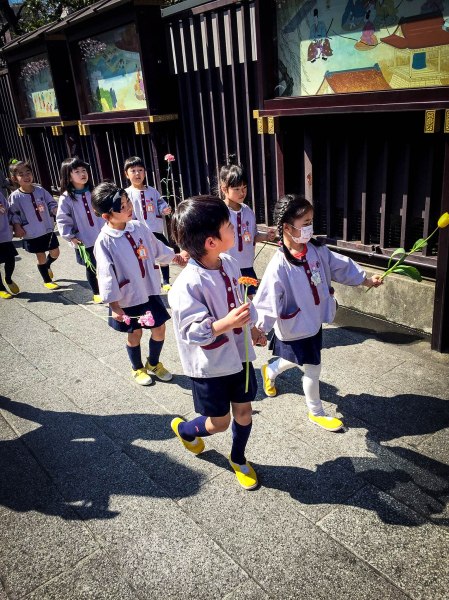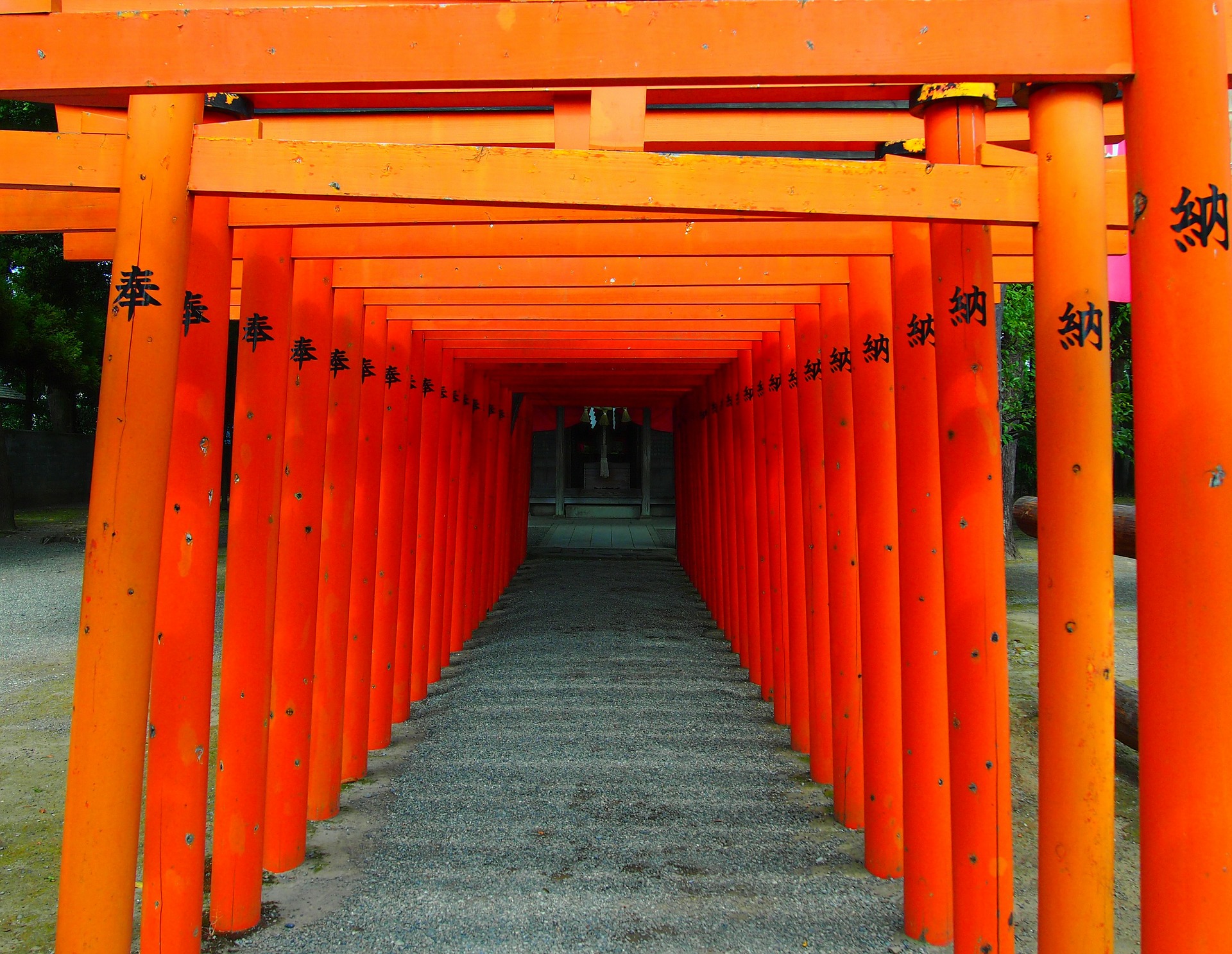“Nothing is impossible – even the word itself says ‘I’m possible!'” – Audrey Hepburn
I never imagined myself learning Japanese, or any Asian type of language. To tell you the truth, I felt pretty pleased with myself for mastering Spanish, and I was ready to stop there.
When I got engaged – I realized that learning Japanese would be a must to be able to talk with my extended family who all live and were raised in Japan. Unlike my husband (who can speak English and Spanish), the only language they know is Japanese. It all started with my in laws. My in laws are simply wonderful people. In a world where some might interracial marriage is a taboo for many, or being married outside of one’s culture is not thought of wt- my mother in law and and father in law were all embracing, from day one. I’ve always been very close to my family, and it was always my dream to be able to be close to whoever my future in laws and extended family would be. I just didn’t plan on them being Japanese! And so begins the adventure…

If you are learning a language – take heart. Not every journey is linear in progress – but remember. It’s yours. Not anyone else’s – yours.
This is all a new journey for me, and it has lots of bumps. Like many journeys, it definitely is not perfect. Nor is it linear. My progress hasn’t always been consistent. I didn’t advance as fast as I had hoped or planned.
For example, in hopes of taking a rapid immersion plunge into Japanese language and culture, I spent 5 weeks in Japan prior to my wedding.
I had big plans. I was going to immerse myself in the language and culture, and wow my new family and friends with my prodigious advances! Get set! Go!

Did I come back fluent? Or with even the basics of Japanese – nope! Total fail. The only phrases I would say I mastered in Japan are:
- Hello (ko-ni-chi-wa) こにちわ
- Nice to meet you (ha-ji-me-ma-shi-te) はじめまして
- I understand (wa-ka-ri-ma-shi-ta) わかりました
- I don’t understand (wa-ka-ri-ma-sen)わかりません
And then there were my favorite two go-to phrases that basically faked that I knew more Japanese than I did!
5. Ahhh I see (so-u-des-ne) そうですね
6. It is true (so-u-na-n-da) そうなんだ
#5 & #6 were lifesavers while I was in Japan. It helped me “participate” in a conversation, although in reality I wasn’t understanding the majority. Fake it till you make it babyyyyyyy!
Almost two years later I would finally say I am making steady progress and am on the path to becoming fluent in Japanese.
I am not a model to look after, nor am I perfect in my journey, but I would like to share some tips for the learner of any new language, especially Japanese.

Learn the basics first: a lot of resources or website encouraged me to just start watching Japanese tv shows, or listening to Japanese music, and voila! , that I would learn. True?! – nope! I tried that, but I walked away learning very little. Why? I think I hadn’t taken the time to just learn the basics of the language. The grammatical structure, or even the basic alphabet. Unlike English, or any Latin letter based language, the Japanese alphabet is not letters.
Japanese is made of three basic alphabets:
1. hiragana,
2. katakana,
3. and kanji.
So…how do you begin?
Hiragana is what you should begin with learning – it is the alphabet of Japanese:

Katakana is probably most used for transcription of loan words from foreign languages. What do I mean my “loanwords”? In Japanese, you’d be surprised to head that they have…er….”borrowed”many words from English, and incorporated them into Japanese. For example, “tomato” is written トマト (tomato). Similarly “America” is written アメリカ (amerika) and “John” is written ジョン (jon).

- Before you start with total immmersion of Japanese, I highly recommend for you to learn the hiragana and katakana alphabet. As tedious as it might seem at first, it will pay off and be an investment for the future. Don’t pay for any expensive texbooks! There are a lot of free and fun resources on the internet

- Here are some of my favorite resources for learning Hiragana and Katakana:
- I loved this very effective free guide for learning Hiragana:
- They also have a free guide for learning Katakana:
If you noticed, the key word in my vocabulary is: FREE. There are so many different and free resources on the internet and even on YouTube, it really is not necessary to shell out even one dollar to learn the basics of Japanese.

Further on, as you get into the more complex Kanji, there may be certain programs our resources you would want to invest in. But for the first few steps, don’t spend any money! It’s not necessary.
Currently, I am beginning to learn the basics of Kanji. Kanji is a whole other beast in an of itself. What is kanji? Basically it means Chinese letters. They are other scripts that the Japanese…er “borrowed” from China, and incorporated them into their own language. What’s really cool about Kanji, is that they are ideographs – or the whole character conveys a meaning, instead of just a sound. Kanji originally started out as pictures, but were then drawn in simpler expressions.
Here are some of my favorite Kanji so far:
- 履 put on pants
- 猿 monkey
- 顔 face
- 鼻 nose
If you look at the words close enough (or drink enough Sake 酒…as I think the early Japanese engineers did), the idea is you can see the picture in the word. Get it? Got it? Good!

Finding your learning style is half the battle of Kanji.
I really loved this explanation of kanji. For me, a “stooop-id”‘ ´Merican, this really helped to break down the evil Kanji for me, and to understand it in context.
- Tofugu (an amazing overall Japanese language/culture resource) has a very useful article series on how to learn Kanji, and to get you started
- Currently, I am learning with the free trial version of WaniKani, another app by Tofugu. It makes it like a game, and what’s more you can download it onto your iPad or mobile phone to learn on the go, whenever you have a few minutes
As I continue with my journey, I will continue to update this post as to what has worked best for me.
I am surprised with how quickly I am learning, and what my brain is capable of. If you are starting off in your journey of learning Japanese and feel frustrated, I understand. I have been there. But remember, every journey starts somewhere. A favorite quote I really liked is…”Learning a language is not a destination, but a journey”. My husband who is Japanese born and raised mentioned that to this day there are still some Kanji or characters that he learns new every day. Don’t ever limit yourself…the best is yet to come.
Are you learning Japanese? Are you fluent? What has helped you the most? Please feel free to comment and share your resources and suggestions in the comments below.
x ~
Dani Daniela

Updated: 9.10.2017

